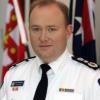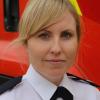About New South Wales Rural Fire Service
The NSW Rural Fire Service has more than 70,000 volunteer members in 2100 brigades providing emergency services to over 95 percent of NSW.
David Boverman
End-user
Steve Boverman
End-user
Anthony Bradstreet
End-user
Anthony Clark
End-user
Simon Curry
End-user
Brad Davies
End-user
Shane Fitzsimmons
End-user
Stephen Glassock
End-user
Dr Simon Heemstra
End-user
Susan Johnston
End-user
Narelle Koteff
End-user
Laurence McCoy
End-user
Stuart Midgley
End-user
Melissa O'Halloran
End-user
Christine Roach
End-user
Phil Robeson
End-user
Patrick Schell
End-user
Trina Schmidt
End-user
Corey Shackleton
End-user
Rebel Talbert
End-user
Kristine Wendtman
End-user
Dr Josh Whittaker
Researcher
Steve Yorke
End-user
Predicting fire danger ratings from physical measures of fire behaviour
Landscape moisture modelling
2018 Reedy Swamp fire post-incident task force
Dr Josh Whittaker
Researcher
2017 NSW post-incident task force
Dr Josh Whittaker
Researcher
Community attitudes and experiences of the 2019/20 NSW bushfire season
Dr Josh Whittaker
Researcher
Urban planning for natural hazard mitigation
David Boverman
End-user
The Australian Natural Disaster Resilience Index: A system for assessing the resilience of Australian communities to natural hazards
Anthony Bradstreet
End-user
2018 Reedy Swamp fire post-incident task force
Anthony Bradstreet
End-user
2017 NSW post-incident task force
Anthony Bradstreet
End-user
Effective risk and warning communication during natural hazards
Anthony Clark
End-user
Improving the role of hazard communications in increasing residents’ preparedness and response planning
Anthony Clark
End-user
Hazards, culture and Indigenous communities
Simon Curry
End-user
Fire coalescence and mass spotfire dynamics
Brad Davies
End-user
Dr Simon Heemstra
End-user
Threshold conditions for extreme fire behaviour
Brad Davies
End-user
Dr Simon Heemstra
End-user
Laurence McCoy
End-user
Fire spread prediction across fuel types
Brad Davies
End-user
Dr Simon Heemstra
End-user
Laurence McCoy
End-user
Fire surveillance and hazard mapping
Brad Davies
End-user
October 2013 NSW post-incident task force
Shane Fitzsimmons
End-user
Catastrophic and cascading events: planning and capability
Stephen Glassock
End-user
Steve Yorke
End-user
Predicting fire danger ratings from physical measures of fire behaviour
Empirical analysis of spot-fire and ember behaviour during extreme fire weather conditions
Dr Simon Heemstra
End-user
Improved predictions of severe weather to reduce community impact
Dr Simon Heemstra
End-user
Mapping bushfire hazard and impacts
Dr Simon Heemstra
End-user
Coupled fire-atmosphere modelling
Dr Simon Heemstra
End-user
Laurence McCoy
End-user
Mapping and understanding bushfire and natural hazard vulnerability and risks at the institutional scale
Narelle Koteff
End-user
Patrick Schell
End-user
Improving the retention and engagement of volunteers in emergency service agencies
Narelle Koteff
End-user
Improving land dryness measures and forecasts
An investigation of the dynamics of fire-fire interactions using a coupled fire-atmosphere model
Modelling fire weather interactions using the ACCESS-Fire model
Laurence McCoy
End-user
An analysis of building losses and human fatalities from natural disasters
Melissa O'Halloran
End-user
Corey Shackleton
End-user
Using realistic disaster scenario analysis to understand natural hazard impacts and emergency management requirements
Melissa O'Halloran
End-user
Corey Shackleton
End-user
From hectares to tailor made solutions for risk mitigation
Melissa O'Halloran
End-user
Optimisation of fuel reduction burning regimes
Melissa O'Halloran
End-user
Policies, institutions and governance
Christine Roach
End-user
Improving decision-making in complex multi-team environments
Phil Robeson
End-user
Capability needs for emergency & disaster management organisations
Phil Robeson
End-user
Scientific diversity and uncertainty in risk mitigation policy and planning
Patrick Schell
End-user
Positive mental health in young adult emergency services personnel
Trina Schmidt
End-user
Cost-effective mitigation strategy for flood prone buildings
Corey Shackleton
End-user
Natural hazard exposure information modelling framework
Corey Shackleton
End-user
Diversity and inclusion: building strength and capability
Rebel Talbert
End-user
Kristine Wendtman
End-user
Out of uniform: building community resilience through non-traditional emergency volunteering
Kristine Wendtman
End-user
Enabling sustainable emergency volunteering
Kristine Wendtman
End-user















